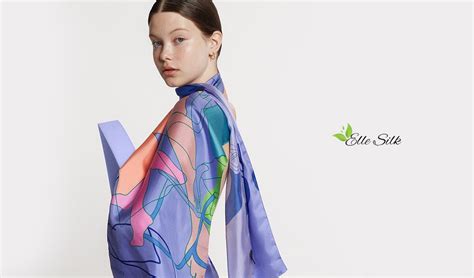Turbans and scarves have traversed centuries and cultures, adorning heads and necks with both functional and aesthetic grace. From the vibrant markets of India to the runways of Paris, these timeless textiles continue to captivate hearts and imaginations.

A Tapestry of History and Culture
Turbans
- Predominantly associated with the Middle East, South Asia, and Africa
- Originated in ancient Mesopotamia around 3000 BCE as a protective head covering
- Worn by men and women alike, signifying social status, religious beliefs, and cultural identity
- In Sikhism, the turban (known as a dastaar) holds immense religious significance, symbolizing honor, discipline, and humility
Scarves
- Date back to ancient Egypt, where they were used as garments and accessories
- Found in various forms across cultures, from the delicate silk shawls of China to the patterned neckerchiefs of cowboys
- Serve practical purposes such as warmth, sun protection, and modesty
- Can be adorned with intricate embroidery, prints, or embellishments, adding a touch of elegance or flair
Applications Beyond Tradition
Head Coverings
- Protective: Protection from sun, wind, cold, or dust
- Religious: Symbol of faith or spiritual beliefs
- Fashionable: Statement piece to complement outfits
Neck Coverings
- Warmth: Insulation during cold weather
- Comfort: Soft and cozy against the skin
- Accessories: Add a pop of color, texture, or pattern to outfits
Fabric Choices and Styling
Turbans
- Can be made of various fabrics, including cotton, silk, wool, or synthetic blends
- Styled in a multitude of ways, from the traditional Sikh dastaar to the modern turbanette
- Colors and patterns range from vibrant hues to intricate designs
Scarves
- Come in a wider variety of materials, from lightweight chiffon to luxurious cashmere
- Worn in different styles, such as a neck wrap, head wrap, shawl, or belt
- Can be accessorized with jewelry, pins, or buckles
Trends and Innovations
Fashion Trends
- Turbans have made a resurgence in recent years, becoming popular accessories for both men and women
- Scarves remain a wardrobe staple, with new trends emerging each season
- Designers are experimenting with innovative fabrics and patterns
Health Innovations
- Scalp protection: Scarves can protect the scalp from sun damage and chemotherapy side effects
- Neck support: Some scarves are designed to provide support for the neck and reduce pain
- Temperature regulation: Smart fabrics can adjust temperature to keep the wearer comfortable
Pain Points and Motivations
Pain Points
- Discomfort: Friction and irritation from rough fabrics or tight scarves
- Unsatisfactory fit: Ill-fitting turbans or scarves can slip off or cause headaches
- Limited options: Finding suitable fabrics, colors, and styles can be challenging
Motivations
- Protection: Shielding from the elements or scalp conditions
- Style: Enhancing outfits with fashionable accessories
- Culture and tradition: Preserving cultural heritage and expressing personal identity
How to Choose the Perfect Turban or Scarf
Consider your Purpose
- Determine the primary purpose (e.g., fashion, religious observance, head protection)
Research Fabrics and Styles
- Explore different materials and styles to find the right fit and look
Experiment with Colors and Patterns
- Choose colors and patterns that complement your outfit or skin tone
Ensure a Proper Fit
- Make sure the turban or scarf fits snugly without being too tight or loose
Accessorize as Desired
- Enhance the look with accessories such as pins, buckles, or jewelry
Comparative Analysis: Turbans vs. Scarves
| Feature | Turbans | Scarves |
|---|---|---|
| Coverage | Full head coverage | Neck and partial head coverage |
| Styling | More formal, often associated with tradition | More versatile, can be worn in various ways |
| Comfort | May be more restrictive | Can be more comfortable due to lighter fabrics |
| Tradition | Strong cultural significance | Can be used for both traditional and modern purposes |
| Accessoryization | Can be accessorized with pins or brooches | Can be accessorized with jewelry, pins, or buckles |
Table 1: Fabric Choices for Turbans and Scarves
| Fabric | Properties |
|---|---|
| Cotton | Breathable, absorbent, easy to care for |
| Silk | Luxurious, drapes beautifully, wrinkle-prone |
| Wool | Warm, insulating, but can be itchy |
| Polyester | Synthetic, wrinkle-resistant, moisture-wicking |
| Chiffon | Sheer, lightweight, flowy |
Table 2: Styling Options for Turbans
| Style | Description |
|---|---|
| Dastaar (Sikh) | Traditional turban with a large, folded cloth |
| Modern Turbanette | Smaller, more stylized turban often worn by women |
| Crown Turban | Turban with a raised center to create volume |
| Headband Turban | Turban worn around the forehead as a headband |
| Twist Turban | Turban created by twisting two scarves together |
Table 3: Pain Points and Solutions
| Pain Point | Solution |
|---|---|
| Discomfort from friction | Choose soft, smooth fabrics |
| Unsatisfactory fit | Experiment with different sizes and styles |
| Limited options | Explore online retailers, specialty stores, or custom-made services |
Table 4: Motivations for Wearing Turbans and Scarves
| Motivation | Description |
|---|---|
| Protection from sun | Shields scalp and neck from harmful UV rays |
| Religious observance | Symbolizes faith and cultural identity |
| Enhancing outfits | Adds a touch of style and elegance to any ensemble |
| Covering hair loss | Conceals baldness or hair thinning |
| Neck support | Provides support and reduces pain |
